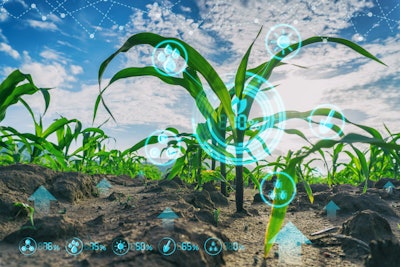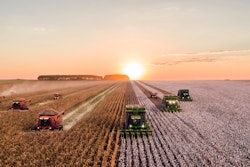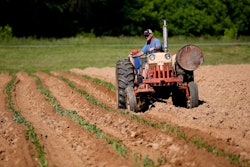
The report “Rethinking Food and Agriculture 2020-2030 -- The Second Domestication of Plants and Animals, the Disruption of the Cow, and the Collapse of Industrial Livestock Farming,” released by RethinkX predicts that by 2030 dairy and cattle industries will be replaced by modern equivalents that are higher quality and cost less than half as much to produce.
“Technology we call precision fermentation and a new production model called Food-as-Software are dramatically driving down the costs and driving up the quality of manufactured proteins,” says report co-author Catherine Tubb. “The industrial livestock industry is one of the oldest, largest, and most inefficient food-production systems in the world. Modern ingredients and foods are about ten times more efficient across the board – from land and water use to feedstock consumption and energy use.”
Technology and new business models are largely driving a disruption in the food and agriculture industry. For example, precision fermentation (PF) is a process that enables the programming of micro-organisms to produce almost any complex organic molecule. Due to rapid improvements in underlying biological and information technologies, the cost of PF development and production is dropping exponentially – from $1 million per kilogram in 2000 to about $100 today. Assuming existing technologies, the report projects that these costs will fall to $10 per kilogram by 2023-25, meaning PF proteins will be five times cheaper than traditional animal proteins by 2030 and 10 times cheaper by 2035.
The report details the way different parts of the cow and the markets they serve will be disrupted separately and concurrently by different technologies and business-model innovations that overlap, reinforce and accelerate one another.
“The key to understanding the disruption of the cow is that PF only needs to disrupt 3.3% of the milk bottle - the key functional proteins - to bring about the collapse of the entire cow milk industry. This is a B2B disruption, not just a simple one-for-one substitution of end products, and does not hinge on changing human behavior,” said Seba. “PF proteins are already being produced commercially. Costs are decreasing exponentially while quality and variety increase exponentially. The industrial cattle farming industry will collapse long before we see modern technologies produce the ‘perfect’ cellular steak at a competitive price.”
Highlights of the report findings include:
- Industry Impacts
- By 2030, the number of cows in the U.S. will have fallen by 50%. Production volumes of the U.S. beef and dairy industries and their suppliers will be cut by more than half.
- By 2030, the market for ground beef by volume will have shrunk by 70%, the steak market by 30% and the dairy market by almost 90%. The markets for other cow products (leather, collagen, etc.) are likely to decline by more than 90%. In total, demand for cow products will fall by 70%.
- By 2030, the U.S. dairy and cattle industries will have collapsed, leaving only local specialty farms in operation.
- By 2035, demand for cow products will fall by 80%-90% and U.S. beef and dairy industry (and their suppliers) revenues, at current prices, will be down nearly 90%.
- Farmland values will collapse by 40%-80%.
- The volume of crops needed to feed cattle in the U.S. will fall by 50% from 155 million tons in 2018 to 80 million tons in 2030, causing cattle feed production revenues, at current prices, to fall by more than 50% from 60 billion in 2019 to less than $30 billion in 2030.
- Other livestock industries will suffer similar disruptions, while the knock-on effects for crop farmers and businesses throughout the value chain will be severe.
- Food Cost Savings
- The cost of modern foods and products will be at least 50% and as much as 80% lower than the animal products they replace, which will translate into substantially lower prices and increased disposable incomes. The average U.S. family will save more than $1,200 a year in food costs, keeping an additional $100bn a year in Americans’ pockets by 2030.
- Jobs Lost and Gained
- Half of the 1.2 million jobs in U.S. beef and dairy production (including supply chain), along with their associated industries, will be lost by 2030, climbing toward 90% by 2035.
- The emerging U.S. modern foods industry will create at least 700,000 jobs by 2030 and up to 1 million jobs by 2035.
- Modern foods will be far more efficient than animal-derived products: Up to 100 times more land efficient, 10-25 times more feedstock efficient, 20 times more time efficient, and 10 times more water efficient than industrial livestock. They will also produce an order of magnitude less waste.
- By 2035, 60% of the land currently used for livestock and feed production will be freed for other uses. These 485 million acres equate to 13 times the size of Iowa, an area almost the size of the Louisiana Purchase. If all this land were dedicated to maximize carbon sequestration, all current sources of U.S. greenhouse gas emissions could be fully offset by 2035.
- U.S. greenhouse gas emissions from cattle will drop by 60% by 2030, on course to nearly 80% by 2035. Even when the modern food production that replaces animal agriculture is included, net emissions from the sector as a whole will decline by 45% by 2030, on course to 65% by 2035.
- Water consumption in cattle production and associated feed cropland irrigation will fall by 50% by 2030, on course to 75% by 2035. Even when the modern food production that replaces animal agriculture is included, net water consumption in the sector as a whole will decline by 35% by 2030, on course to 60% by 2035.
- Oil demand from the U.S. agriculture industry (currently 150 million barrels of oil equivalent a year) will fall by at least 50% by 2030.
- The modern food system will be decentralized and therefore more stable and resilient, thereby increasing food security.
- Nutritional benefits could have profound impact on health, particularly conditions such as heart disease, obesity, cancer, and diabetes that are estimated to cost the U.S. $1.7 trillion each year. The way they are produced should also ensure a sharp reduction in foodborne illness.
- Trade relations and geo-politics will shift due to a decentralized food production system.
- Any country will be able to capture the opportunities associated with a global industry worth hundreds of billions of dollars.
Meanwhile, the new report also focuses on the food industry and how the same technology is poised to disrupt and blur the lines that separate food, cosmetics, healthcare and materials. The sheer scale of this market opportunity will create a virtuous cycle, attracting talent and investment, increasing research and development, improving products and processes and inventing new ones, accelerating market growth, driving down costs and speeding up adoption.
“This disruption is inevitable,” says RethinkX co-founder Jamie Arbib. “The positive impacts – from food security to climate change – are profound. But policymakers, investors, businesses, and voters have some power over this disruption’s speed, scale, impacts, and who benefits. One of the first and most critical decisions is to ensure an open market place. Will this be a market that promotes openness, transparency, and competition? Or will it be a market — like the pharmaceutical industry — dominated by a few monopolies with the power to restrict or prevent the realization of the enormous economic, social, and environmental benefits?”


















